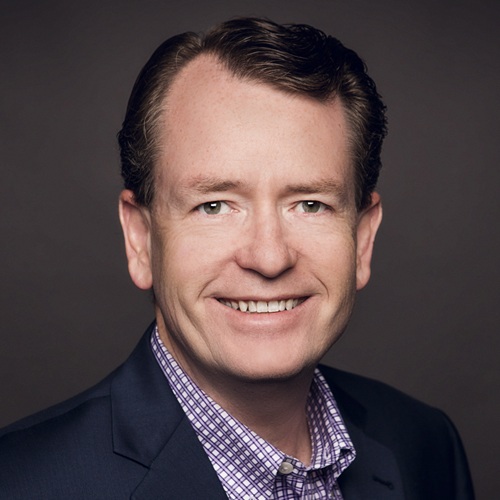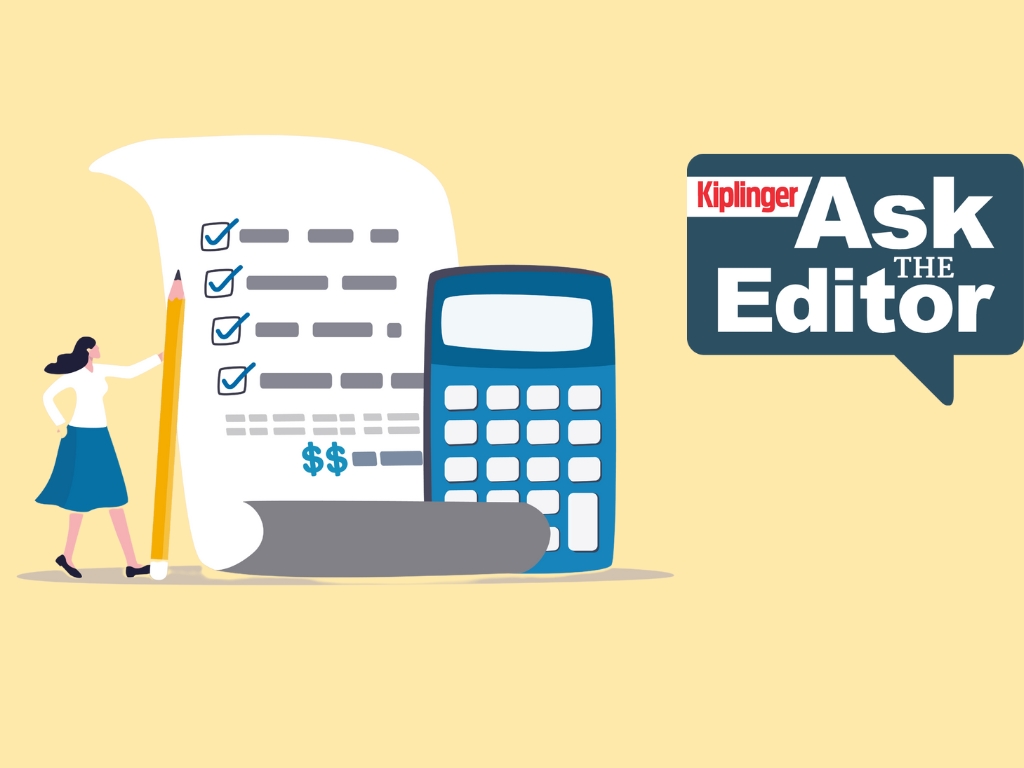I'm a Financial Planner: This Is How You Can Get Started With RMDs
The IRS will come knocking for its share of your tax-deferred retirement savings when you hit 73, but planning ahead for RMDs will ensure you're not caught off guard.


I'm always concerned, but never surprised, when I meet a new or soon-to-be retiree who doesn't know much about required minimum distributions (RMDs).
The rules that govern these mandatory retirement account withdrawals have always been confusing.
And because RMDs don't start until you're in your 70s, it can be tempting to put off worrying about their impact until other, more pressing planning decisions are made.
From just $107.88 $24.99 for Kiplinger Personal Finance
Become a smarter, better informed investor. Subscribe from just $107.88 $24.99, plus get up to 4 Special Issues

Sign up for Kiplinger’s Free Newsletters
Profit and prosper with the best of expert advice on investing, taxes, retirement, personal finance and more - straight to your e-mail.
Profit and prosper with the best of expert advice - straight to your e-mail.
Most people are far more anxious about getting their Social Security and Medicare benefits squared away than preparing for RMDs.
Kiplinger's Adviser Intel, formerly known as Building Wealth, is a curated network of trusted financial professionals who share expert insights on wealth building and preservation. Contributors, including fiduciary financial planners, wealth managers, CEOs and attorneys, provide actionable advice about retirement planning, estate planning, tax strategies and more. Experts are invited to contribute and do not pay to be included, so you can trust their advice is honest and valuable.
But putting RMD planning on the back burner can have significant consequences — especially if, like most Americans, you've stashed all or a large portion of your savings into one or more tax-deferred retirement accounts, such as a 401(k), 403(b) or traditional IRA.
Every saver should know the basics of how RMDs work. Here's a quick Q&A to help you get your planning started.
What is an RMD?
The IRS doesn't allow savers to keep the money in their tax-deferred retirement accounts indefinitely.
Once you reach the age when RMDs start (currently 73), you must begin withdrawing at least a minimum amount annually and pay income taxes on that money.
The amount you're required to withdraw each year will be based on your age and the balance of your account (or accounts) at the end of the previous year.
What accounts require minimum distributions?
The RMD rules apply to all employer-sponsored retirement plans, such as 401(k), 403(b) and 457(b) plans, as well as profit-sharing plans.
Owners of traditional IRAs and IRA-based plans, including Simplified Employee Pension Plans (SEPs), Salary Reduction Simplified Employee Pension Plans (SARSEPs) and Savings Incentive Match Plan for Employees (SIMPLE IRAs), must also take RMDs.
The RMD rules don't apply to Roth IRAs or designated Roth accounts while the owner is alive, because Roth owners have already paid taxes on their contributions. But beneficiaries of these accounts do have to abide by RMD rules.
When is my first RMD due?
For most people, their first RMD is due on April 1 of the year following the calendar year in which they turn 73.
For example, if you're turning 73 in 2026, your first RMD — based on your account balance at the end of 2025 — won't be due until April 1, 2027.
But here's where things can get tricky.
After that first withdrawal, the due date for all future RMDs switches to December 31. That means if you wait until the April 1, 2027, due date to make the first withdrawal and then make your second withdrawal by December 31, 2027, you'll pay taxes on two RMDs in the same year.
If that works for you, great. But you may find that it makes more sense to take those disbursements in two separate tax years. For this example, that would mean taking the first RMD by December 31, 2026, and the second by December 31, 2027.
Your financial adviser or tax professional can help you run the numbers to determine which is the better strategy for you, but do that planning well in advance of your first RMD.
If you don't take your RMDs at the appropriate time, or you withdraw the wrong amount, you may face a hefty penalty.
What if I'm still working?
If you're turning 73 but you're still employed, and you own less than 5% of the company you work for, the IRS will let you delay taking RMDs from your workplace retirement plan — as long as your plan allows it.
However, if you own retirement accounts outside your current workplace (a traditional IRA with your bank, for example, or a 401(k) with a former employer), you'll have to calculate RMDs for those accounts.
How do I calculate my RMDs?
Your retirement account custodian will determine your RMD amount automatically each year and provide you with that information. But it's your responsibility as the account owner to make sure the amount is correct and the distribution is made.
You can calculate your RMDs using this guide or the Required Minimum Distribution Calculator at Investor.gov.
Or you can do the math yourself and divide your previous year-end account balance by the life expectancy distribution factor next to your age on the IRS Uniform Lifetime Table.
As you age, the distribution factor will decrease, which means your RMDs may grow as you get older, depending on the size of your account balance.
Planning for that potential impact now, by converting some funds to a Roth account or employing other strategies, could help you minimize future taxes.
What if I have more than one tax-advantaged account?
As mentioned previously, you may need to calculate multiple RMD amounts each year if you have more than one account. But, depending on the types of accounts, you can be strategic with your withdrawals.
For example, after calculating the RMD separately for each traditional IRA you own, you can add up the amounts and withdraw the total from just one of your IRAs.
However, RMDs for some types of retirement plans, such as 401(k) and 457(b) plans, must be calculated and withdrawn separately from each of those accounts.
What if I don't want or need the money?
Although you're required to take RMDs every year once you turn 73, you aren't obligated to spend the money. You can always choose to reinvest those funds elsewhere.
That might mean opening or adding to a brokerage account, buying an investment property, paying down high-interest credit card debt, or contributing to a 529 plan for a child or grandchild.
Looking for expert tips to grow and preserve your wealth? Sign up for Adviser Intel (formerly known as Building Wealth), our free, twice-weekly newsletter.
Or you could consider the tax benefits of an RMD-reduction strategy, such as a qualified charitable distribution (QCD) or a qualified longevity annuity contract (QLAC).
Again, your adviser or tax professional can help you understand each strategy's implications for your situation.
RMD rules keep evolving
Even if you think RMDs won't be an issue for you, keep them on your retirement planning radar.
The rules that govern the timing of RMDs — including the age when they begin and how they might affect those who inherit your accounts — have gone through significant changes in recent years.
These and other regulations will likely continue to evolve, so the information you rely on should be well-sourced and up to date.
You don't have to (and shouldn't) wait until you're in your 70s to familiarize yourself with the RMD rules, which can be found on the IRS website.
And if you have questions, don't hesitate to contact a financial professional, preferably a retirement specialist, for guidance.
Insurance and Advisory services are offered through Heckman Financial & Insurance Services, Inc. HFIS, Inc., an SEC Registered Investment Adviser. Heckman Financial & Insurance Services is not affiliated with or endorsed by the Social Security Administration or any government agency. CA Insurance License #OE89971
Kim Franke-Folstad contributed to this article.
The appearances in Kiplinger were obtained through a PR program. The columnist received assistance from a public relations firm in preparing this piece for submission to Kiplinger.com. Kiplinger was not compensated in any way.
Related Content
- Required Minimum Distributions (RMDs): Rules, Deadlines, and Important Changes to Know
- Stressing About RMDs? Two Ways to Reduce or Even Eliminate Them
- Lower Your Retirement Taxes: Seven Common RMD Mistakes to Avoid
- New Year's Eve RMD Deadline: What to Know and What to Do
- Avoid Estimated Tax Payments in Retirement With RMD Withholding
Profit and prosper with the best of Kiplinger's advice on investing, taxes, retirement, personal finance and much more. Delivered daily. Enter your email in the box and click Sign Me Up.

As CEO of Heckman Financial and Insurance Services, Inc., Eric Heckman, CFP®, is passionate about creating strategies that can help his clients preserve their assets, increase their income and reduce their taxes.
Eric is a well-known speaker and author in the San Jose, California, community. For over 25 years, Eric has provided comprehensive advice to his clients, helping to preserve their assets, increase their income and reduce their taxes. A longtime San Jose resident, Eric is a Boy Scout leader; founder of Financial Knowledge Institute, a 501(c)(3) non-profit organization; and a member of the Downtown San Jose Rotary Club and the San Jose Downtown Association.
-
 Ask the Editor: Itemized Deductions
Ask the Editor: Itemized DeductionsAsk the Editor In this week's Ask the Editor Q&A, Joy Taylor answers questions on itemized deductions claimed on Schedule A of Form 1040
-
 9 Types of Insurance You Don't Need
9 Types of Insurance You Don't NeedFinancial Planning If you're paying for these types of insurance, you may be wasting your money. Here's what you need to know.
-
 Are You Putting Yourself Last? The Cost Could Be Your Retirement
Are You Putting Yourself Last? The Cost Could Be Your RetirementIf you're part of the sandwich generation, it's critical that you don't let the needs of your aging parents come at the expense of your future.
-
 Are You Putting Yourself Last? The Cost Could Be Your Retirement Security
Are You Putting Yourself Last? The Cost Could Be Your Retirement SecurityIf you're part of the sandwich generation, it's critical that you don't let the needs of your aging parents come at the expense of your future.
-
 I'm an Insurance Pro: It's Time to Prepare for Natural Disasters Like They Could Happen to You
I'm an Insurance Pro: It's Time to Prepare for Natural Disasters Like They Could Happen to YouYou can no longer have the mindset that "that won't happen here." Because it absolutely could. As we head into 2026, consider making a disaster plan.
-
 The Future of Philanthropy Is Female: How Women Will Lead a New Era in Charitable Giving
The Future of Philanthropy Is Female: How Women Will Lead a New Era in Charitable GivingWomen will soon be in charge of trillions in charitable capital, through divorce, inheritance and their own investments. Here's how to use your share for good.
-
 The Retirement Donor's Checklist: Key Deadlines by Gift Type
The Retirement Donor's Checklist: Key Deadlines by Gift TypeRetirees have some charitable contribution options that can help avoid spikes in income from RMDS and capital gains.
-
 Cooler Inflation Supports a Relief Rally: Stock Market Today
Cooler Inflation Supports a Relief Rally: Stock Market TodayInvestors, traders and speculators welcome much-better-than-hoped-for core CPI data on top of optimism-renewing AI earnings.
-
 Estate Tax Quiz: Can You Pass the Test on the 40% Federal Rate?
Estate Tax Quiz: Can You Pass the Test on the 40% Federal Rate?Quiz How well do you know the new 2026 IRS rules for wealth transfer and the specific tax brackets that affect your heirs? Let's find out!
-
 The November CPI Report Is Out. Here's What It Means for Rising Prices
The November CPI Report Is Out. Here's What It Means for Rising PricesThe November CPI report came in lighter than expected, but the delayed data give an incomplete picture of inflation, say economists.
-
 I'm 73, Retired, and Dreading Winter, But I Can't Afford to Be a Snowbird. Help!
I'm 73, Retired, and Dreading Winter, But I Can't Afford to Be a Snowbird. Help!How can a snowbird wannabe warm up without the expense? We asked professional wealth planners for advice.